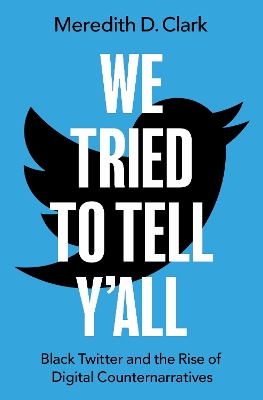Explaining Research
 -10%
portes grátis
-10%
portes grátis
Explaining Research
How to Reach Key Audiences to Advance Your Work
Meredith, Dennis
Oxford University Press Inc
10/2021
416
Mole
Inglês
9780197571316
15 a 20 dias
596
Descrição não disponível.
Foreword, Peter Agre, MD
Preface
Acknowledgments
Introduction: Explaining Your Research Is a Professional Necessity
Part I: Learning a New Communication Paradigm
Chapter 1: Understanding Your Audiences
Chapter 2: Plan Your Research Communication Strategy
Part II: Effectively Reaching Your Peers
Chapter 3: Give Compelling Talks
Chapter 4: Develop Informative, Engaging Visuals
Chapter 5: Create Effective Poster Presentation
Chapter 6: Write Clear Research Explanations
Chapter 7: Build a Quality Website
Part III: Engaging Lay Audiences
Chapter 8: Develop Your Lay-Level Research Communication Strategy
Chapter 9: The Essential News Release
Chapter 10: Craft Releases That Tell Your Research Story
Chapter 11: Target Releases to Key Audiences
Chapter 12: Produce Effective Research Photography
Chapter 13: Produce Informative Research Videos
Chapter 14: Organize Dynamic Multimedia Presentations
Chapter 15: Create E-Newsletters, Podcasts, Wikis, Social Networks, Blogs, and Webinars
Chapter 16: Write Popular Articles, Op-Eds, and Essays
Chapter 17: Author Popular Books
Chapter 18: Become a Public Educator
Chapter 19: Persuade Administrators, Donors, and Legislators
Part IV: Explaining Your Research Through the Media
Chapter 20: Parse Publicity's Pros and Cons
Chapter 21: Understand Journalists
Chapter 22: Meet Journalists' Needs
Chapter 23: Prepare for Media Interviews
Chapter 24: Make the Interview Work for You
Chapter 25: Protect Yourself from Communication Traps
Chapter 26: Manage Media Relations at Scientific Meetings
Chapter 27: Work with Your Public Information Officer
Chapter 28: Should You Be a Public Scientist?
Index
Preface
Acknowledgments
Introduction: Explaining Your Research Is a Professional Necessity
Part I: Learning a New Communication Paradigm
Chapter 1: Understanding Your Audiences
Chapter 2: Plan Your Research Communication Strategy
Part II: Effectively Reaching Your Peers
Chapter 3: Give Compelling Talks
Chapter 4: Develop Informative, Engaging Visuals
Chapter 5: Create Effective Poster Presentation
Chapter 6: Write Clear Research Explanations
Chapter 7: Build a Quality Website
Part III: Engaging Lay Audiences
Chapter 8: Develop Your Lay-Level Research Communication Strategy
Chapter 9: The Essential News Release
Chapter 10: Craft Releases That Tell Your Research Story
Chapter 11: Target Releases to Key Audiences
Chapter 12: Produce Effective Research Photography
Chapter 13: Produce Informative Research Videos
Chapter 14: Organize Dynamic Multimedia Presentations
Chapter 15: Create E-Newsletters, Podcasts, Wikis, Social Networks, Blogs, and Webinars
Chapter 16: Write Popular Articles, Op-Eds, and Essays
Chapter 17: Author Popular Books
Chapter 18: Become a Public Educator
Chapter 19: Persuade Administrators, Donors, and Legislators
Part IV: Explaining Your Research Through the Media
Chapter 20: Parse Publicity's Pros and Cons
Chapter 21: Understand Journalists
Chapter 22: Meet Journalists' Needs
Chapter 23: Prepare for Media Interviews
Chapter 24: Make the Interview Work for You
Chapter 25: Protect Yourself from Communication Traps
Chapter 26: Manage Media Relations at Scientific Meetings
Chapter 27: Work with Your Public Information Officer
Chapter 28: Should You Be a Public Scientist?
Index
Este título pertence ao(s) assunto(s) indicados(s). Para ver outros títulos clique no assunto desejado.
Foreword, Peter Agre, MD
Preface
Acknowledgments
Introduction: Explaining Your Research Is a Professional Necessity
Part I: Learning a New Communication Paradigm
Chapter 1: Understanding Your Audiences
Chapter 2: Plan Your Research Communication Strategy
Part II: Effectively Reaching Your Peers
Chapter 3: Give Compelling Talks
Chapter 4: Develop Informative, Engaging Visuals
Chapter 5: Create Effective Poster Presentation
Chapter 6: Write Clear Research Explanations
Chapter 7: Build a Quality Website
Part III: Engaging Lay Audiences
Chapter 8: Develop Your Lay-Level Research Communication Strategy
Chapter 9: The Essential News Release
Chapter 10: Craft Releases That Tell Your Research Story
Chapter 11: Target Releases to Key Audiences
Chapter 12: Produce Effective Research Photography
Chapter 13: Produce Informative Research Videos
Chapter 14: Organize Dynamic Multimedia Presentations
Chapter 15: Create E-Newsletters, Podcasts, Wikis, Social Networks, Blogs, and Webinars
Chapter 16: Write Popular Articles, Op-Eds, and Essays
Chapter 17: Author Popular Books
Chapter 18: Become a Public Educator
Chapter 19: Persuade Administrators, Donors, and Legislators
Part IV: Explaining Your Research Through the Media
Chapter 20: Parse Publicity's Pros and Cons
Chapter 21: Understand Journalists
Chapter 22: Meet Journalists' Needs
Chapter 23: Prepare for Media Interviews
Chapter 24: Make the Interview Work for You
Chapter 25: Protect Yourself from Communication Traps
Chapter 26: Manage Media Relations at Scientific Meetings
Chapter 27: Work with Your Public Information Officer
Chapter 28: Should You Be a Public Scientist?
Index
Preface
Acknowledgments
Introduction: Explaining Your Research Is a Professional Necessity
Part I: Learning a New Communication Paradigm
Chapter 1: Understanding Your Audiences
Chapter 2: Plan Your Research Communication Strategy
Part II: Effectively Reaching Your Peers
Chapter 3: Give Compelling Talks
Chapter 4: Develop Informative, Engaging Visuals
Chapter 5: Create Effective Poster Presentation
Chapter 6: Write Clear Research Explanations
Chapter 7: Build a Quality Website
Part III: Engaging Lay Audiences
Chapter 8: Develop Your Lay-Level Research Communication Strategy
Chapter 9: The Essential News Release
Chapter 10: Craft Releases That Tell Your Research Story
Chapter 11: Target Releases to Key Audiences
Chapter 12: Produce Effective Research Photography
Chapter 13: Produce Informative Research Videos
Chapter 14: Organize Dynamic Multimedia Presentations
Chapter 15: Create E-Newsletters, Podcasts, Wikis, Social Networks, Blogs, and Webinars
Chapter 16: Write Popular Articles, Op-Eds, and Essays
Chapter 17: Author Popular Books
Chapter 18: Become a Public Educator
Chapter 19: Persuade Administrators, Donors, and Legislators
Part IV: Explaining Your Research Through the Media
Chapter 20: Parse Publicity's Pros and Cons
Chapter 21: Understand Journalists
Chapter 22: Meet Journalists' Needs
Chapter 23: Prepare for Media Interviews
Chapter 24: Make the Interview Work for You
Chapter 25: Protect Yourself from Communication Traps
Chapter 26: Manage Media Relations at Scientific Meetings
Chapter 27: Work with Your Public Information Officer
Chapter 28: Should You Be a Public Scientist?
Index
Este título pertence ao(s) assunto(s) indicados(s). Para ver outros títulos clique no assunto desejado.







